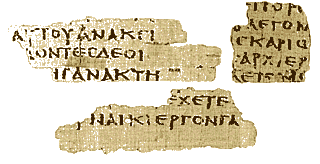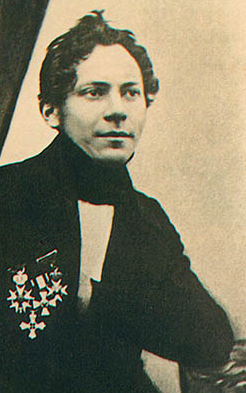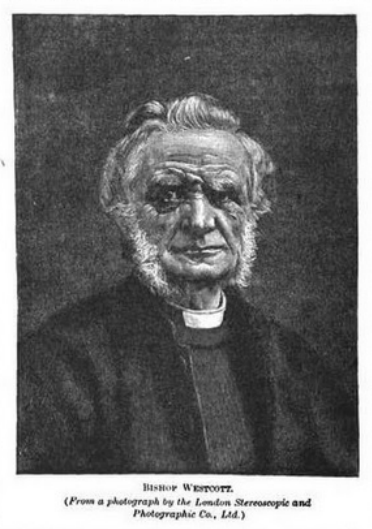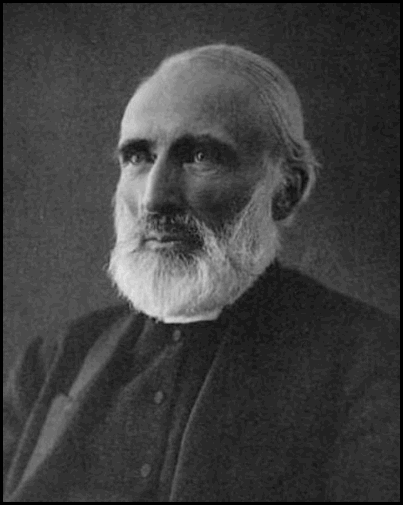

Sinaiticus is a Fraud

Bible study is an important part of spiritual life. After chastity and meditation, it is good to bring that inspiration as close as we can to the scriptures - the best we can find, the closest possible to what Yeshuah, Peter and the apostles tried to teach us. No matter how far into clown world we find ourselves, the Bible remains the world's most popular and important book. And no matter how far the canaanites have gone to corrupt these scriptures, the relatively good KJV, they hate, remains the most trusted. This article will concern the great naked canaanite emperor in the Bible room, the codex on which all their textual corruptions are based, Codex Sinaiticus. What if it was just another jewniversity dogma? If the "oldest and best" manuscript being used for modern bibles were held up to professional standards, would it even be considered genuine, much less textually useful?
Auction-house standards
Academia, as we all now know well, is entirely corrupted with canaanite ideologies, and this situation gives birth to the idea that the real world is in fact outside that system. Well in the real world of authentication, there are actual objects for sale, and the buyers actually care if they are genuine or not; a very good example of where they can be found is at the auction house. There, in this suddenly serious, non-clownworld space, there are four determinations to make in verifying an article: 1) provenance 2) chain of custody 3) chemical composition 4) is it copied? if so, from what? (source documents).
The canaanite establishment, like with any of its other weird dogmas like baal earth, dinos, ETs, Greek-letter king viruses, and evilution, has never bothered to verify its core source document of the desired spiritual White genocide. Surprise, surprise. Lamestream sources confirm: Sinaiticus has no provenance:
Little is known of the manuscript's early history. [1]
As for number two, the chain of custody story starts in the 1840's, i.e., there is no proof of this thing existing before this time. Chemical testing, number three, was once ordered for Sinaiticus, but then cancelled (in April, 2015). So "super bible" has never been tested. Further there is textual analysis: Sinaiticus contains a chaotic mixture of styles. Ironically (as everything so happens in clownworld), the alleged discoverer himself, Tischendorf, published a book on the "latinized Greek", i.e., medieval language, in his super-bible, a particularly glaring "case closed" issue, as it is obviously impossible for any codex dated to around 350 AD. As if that weren't enough, it has 23,000 errors, the most of any alleged biblical codex in existence. This would give any sane observer a strong doubt that the text's writer was even trying to make any serious Bible intended for church use and study. (It turns out, as we shall see, that it was made as a faux antique collector's item only):
Tischendorf originally documented some 14,800 corrections in the manuscript. But in 2009 in the BBC FOUR documentary on [the codex], they state that the manuscript has about 23,000 corrections, and they go on to say that since because of the amount of correction that it "can't be the immutable word of God". [1]
Finally, the pages have been rearranged, intentionally stained, and butchered in a final attempt to artificially age it, eliminate any clear identifying marks, and further advance a doctrinal agenda.
Some other arguments for Sinaiticus as a fraud:
- It was found in a a trash heap/burn pile at St. Catherine's []This is not a plausible story for several reasons: parchment doesn't burn like paper. Monks are better experts at scripture than any NWO clown and wouldn't be just throwing it away. Even if it were a good copy, that could be sold or used for reference. An invaluable text wouldn't be laying around a monastery for 1600 years unnoticed. Tischendork wasn't some Christian hero, saving critical holy texts of our faith from (evil and stupid?) monks. The monastery confirms he stole it. The story is so stupid, it has a palpably mocking tone to it like the "Elvis died on the toilet while reading a book about Jesus" etc.
- Tischendorf used every means to obfuscate and delay the whole question of provenance []He used at least two different names for the codex, published different parts of it under yet other names, and hid the origin of the texts for 15 years, refusing to debate its author, hiding quality differences by splitting up the text and housing it in different parts of the world, housing the main part of it in Russia which was quite inaccessible in that age
- Simonides' story is very detailed and holds up to rigorous scrutiny []David Daniels' videos go into utterly autistic depth on every detail, and Simonides is indeed vindicated. On my own I found that he said it was written with two friends, then found that even wankapedia admits there were apparently three scribes who wrote it []. We think Constantine Simonides' testimony is solid, has no profit motive/is objective, and will continue to be born out by the facts as more information comes to light
- Sinaiticus' commissioner was a shady occultist who changed his name to Benedict and escaped to Athos
- One of the scribes of Sinaiticus is even officially recognized as also having authored part of Vaticanus []This is revealed in Daniels' videos
- Many of Sinaiticus' pages are stained brown, with several examples on contiguous pages [1]
- There are two different eras of Greek (koine and modern) present, even on the same pages
- Fantastic archeological claims need fantastic evidence to back them up
- The Bible specifically prohibits non-Levite publications and translations of the OT There is no way around this []This is a hard fact to accept, but to study the Bible, you will need to study its original languages and use only the Levite Masoretic Text and Antiochian Textus Receptus. Most key aspects of the Bible (its language, cultural and historical context, poetic meter etc) cannot be translated, and unauthorized sources (starting with canaanites in Alexandria) cannot be trusted:
Malachi 2:7-8 "For the priest's lips should keep knowledge, and they should seek the law at his mouth: for he is the messenger of the LORD of hosts. But ye are departed out of the way; ye have caused many to stumble at the law; ye have corrupted the covenant of Levi, saith the LORD of hosts."
The covenant of Levi was with this tribe alone, to copy and guard the Old Testament Hebrew Scriptures. Deut. 31:24-26 "And it came to pass, when Moses made an end of writing the words of this law in a book, until they were finished, That Moses commanded the Levites, which bare the ark of the covenant of the LORD, saying, Take this book of the law, and put it in the side of the ark of the covenant of the LORD your God, that it may be there for a witness against thee."
Ezra 7:6 "This Ezra went up from Babylon: and he was a ready scribe in the law of Moses, which the LORD God of Israel had given." Ezra was a Levite and a scribe of the law of God.
Davis's Dictionary of the Bible tells us that "the Levites were employed as scribes for the business of repairing the temple", and it refers to 2 Chronicles 34:13-15 "...and of the Levites there were scribes, and officers, and porters. And...Hilkiah the priest found a book of the law of the LORD given by Moses. And Hilkiah answered and said to Shaphan the scribe, I have found the book of the law in the house of the LORD." - The Bible specifically prohibits texts from Egypt. Concerning our tribulation in Avaris, Egypt, and the exodus in 1426 B.C., cabalists and Christians agree: returning to Egypt is a sign of doom for Christians []In the book of Jeremiah God brought judgment upon the nation of Israel because of their idolatry. There was a remnant left in the land, and yet these too rebelled against God and his prophet. In Jeremiah 42 the people feign a desire to know the mind of the Lord, but in reality they wish to go their own way back into Egypt. The prophet Jeremiah clearly tells them "when ye shall enter into Egypt...ye shall be an execration, and an astonishment, and a curse, and a reproach...O ye remnant of Judah, GO YE NOT INTO EGYPT; know certainly that I have admonished you this day." Jeremiah 42:13-19.
In Genesis 26:2 there was a famine in the land where Isaac dwelt, "And the LORD appeared unto him and said, GO NOT DOWN INTO EGYPT...Sojoun in this land, and I will be with thee, and will bless thee."
God delivered His people out of Egypt, and did not want them to return there. In Matthew 2:12-21 when Herod sought to kill the baby Jesus, Joseph was warned of God to take his wife Mary and the child Jesus and flee into Egypt. However this was done to fulfill the spiritual type and prophecy - "that it might be fulfilled which was spoken of the Lord by the prophet, saying, OUT OF EGYPT have I called my son." This is a direct reference to Hosea 11:1 "When Israel was a child, then I loved him, and called MY SON OUT OF EGYPT." It is of interest that the LXX translation is wrong here. It says "out of Egypt I called HIS CHILDREN", instead of the Hebrew text which says " I called my son". While in Egypt there is no recorded revelation given by God until He told Joseph to leave Egypt and "go into the land of Israel".
Jerusalem will be in a corrupted state in the last days. In Revelation 11:8 we read of the beast who arises to kill the two prophets sent from God. "And their dead bodies shall lie in the street of the great city, which spiritually is called Sodom AND EGYPT, where also our Lord was crucified."
Many commentators have pointed out the great truths of the book of Genesis, which begins with the words: "In the beginning God created the heaven and the earth." The book goes on to tell of the creation of Adam in innocence, his fall, and the sad history of his descendants which ends with these final words: "in a coffin in Egypt."
The Bible itself tells us what God thinks of anything associated with the land of Egypt.
Now that we're sure it's fake we can ask: Why, when and how? [1]
Gnostic/Cabalist hoaxing
In the history of Bible versions, there is a family of scam bibles from the gnostics who deny that Jesus is God and eliminate any scripture that suggests the fact. While the apostles were busy copying and sending out authentic texts from Antioch, Syria, the canaanites in Alexandria Egypt were churning out corrupted texts, which thankfully to any discerning observer, differ greatly among themselves. The two main texts of the three Alexandrian (Egyptian) have over 4,000 differences between them. According to their chaos-worshipping canaanite fathers, the order and selection of books therein is strange, heretical and would offend even the average Christian. In a continuation of this Egyptian cabalist lodge and fake news outlet in the age of Sinaiticus, we have the Westcott-Hort axis of occult one-world religionists combining and mixing these texts. As these destroyers lack imagination, their official, resulting text is missing over 6,000 scriptures, including key parts like Jesus asking Yahweh, "Why have you foresaken me?", among many others. Here's another synopsis of this historical turn of blibical events:
With the discovery of the Nag Hammadi Gnostic Library in the 1940's, it became clear that the early unorthodox sect known as the "Gnostics" did not believe in the deity of Jesus Christ. Nor did they really believe in His humanity either. They believed He was a "guiding spirit" sent to earth by the "True God" (not the YHWH of the Old Testament, incidently, whom they considered to be a blind, insane angel who created the material world against Sophia's or "Wisdom" i.e. the True God's will). Jesus' mission according to the Gnostics, was to impart special knowledge or "Gnosis" to spirits trapped in this material world seeking release. Thus, Jesus never died on the cross, was never resurrected, was not God, nor was He human. Mysteriously, but rather conveniently, all the altered or missing texts in the Alexandrian Codices always happen to involve one or a combination of these subjects. Consider: where was the center of operations for this unorthodox sect? Alexandria, Egypt.
Now, the pieces fall into place. All these "missing" verses were in the original texts written by the apostles. The older manuscripts & the many quotes from the 1st and 2nd century church fathers more than confirm that as fact. However, since these verses did not agree with the theology being taught by the Gnostics, when they made their own Coptic copies of the Greek originals, they conveniently altered or deleted them to suit their own ideas of what God should say. Westcott & Hort, along with many in Victorian Era England such as Arthur Conan Doyle, Charles Darwin (a divinity school graduate) & HG Wells, were caught up in the occult, spiritism & secular humanist questioning of the validity of orthodox Christianity typical of the time. These corrupted Coptic texts easily appealed to Westcott & Hort's own sensibilities (as testified to by their surviving correspondence with each other). Nevertheless, they did indeed make an excellent Greek translation of what knowingly or unknowingly was a horrendous, blasphemous, heavily edited & thus corrupted Coptic translation of a Greek original.
[1]
In other words, in the 19th century, the Bible was still largely understood to be the story of how Yahweh became man (incarnated as Jesus). Yet the canaanite Alexandrian texts, with all their contradictions among themselves, thousands of omissions, and haphazard combination of translation styles, seem to have a gnostic/masonic impetus: to say that man can become God.
Is Aleph the oldest?
Up to this point, even the Catholic Bible was using the Textus Receptus as its base text (it was the Vatican that hired Eusebius), and 1650 years had reportedly passed before the sudden and miraculous "new discovery" of Sinaiticus ("Aleph", because they consider it the first and best). Even if their fantastic claims about it were true, it wouldn't even be the oldest.
When someone says that B and Aleph [Sinaiticus] are the oldest available manuscripts, they are lying. There are many Syriac and Latin translations from as far back as the SECOND CENTURY that agree with the King James readings. For instance, the Pashitta (145 A.D.), and the Old Syriac (400 A.D.) both contain strong support for the King James readings. There are about fifty extant copies of the Old Latin from about 157 A.D., which is over two hundred years before Jerome was conveniently chosen by Rome to "revise" it. Then Ulfilas produced a Gothic version for Europe in A.D. 330. The Armenian Bible, which agrees with the King James, has over 1,200 extant copies and was translated by Mesrob around the year 400. Sinaiticus and Vaticanus are clearly NOT the oldest and best manuscripts. [1]

For example, The Oxford Papyri - This fragment known as the Oxford Papyri or P-64, may be the oldest NT text ever found. For centuries scholars have believed that the NT Gospels were not written by the Apostles in the 1st c. but were passed on by word of mouth from generation to generation for 100 years to be finally penned by scribes some time in the 2nd c.AD. This papyrus text dated to cAD50, a mere 20 years after the crucifixion, seems to provide proof that at least the Gospel of Matthew was an eyewitness account, written by a disciple who lived during the days when Christ Himself was on earth. [There were also stenographers recording gospels first-hand in shorthand]. [1]

and LXX plot, Vissarion of Symi, Βησσαριον,
Βασιλειος, Βενεδικτος (Benedict), teacher at the
school of the Virgin of the Orphans Church at
Cydoniae for 35 years, from 1784 to 1819
Key players
We all know there were Tischendorf, the trophy goy, and Constantine Simonides, who penned it. But the 45-year plot's mastermind was Simonides' maternal great uncle who went by three different names: Vassileos, Vissarion and Benedict. He clearly wanted Barnabas and the Shepherd of Hermas included in his new bible. He apprently wanted it to replace the current orthodox Bible, or any real Bible for that matter.
It's an interesting cohencidence that Benedict went to retire in Athos in 1821 just as the people of his hometown were being massacred by the Ottomans for a rebellion he helped to foment. He later wrote a personal letter to royalty asking that his home island of Symi be included in the newly-formed Greece. His bio looks hyped and hardly confirmable - that he was a teacher and translator of twelve languages. He taught at the Acadamy of Ayvalik/Cidoniae for 35 years, which was well-known as a hotbed of cabala. These connections, actions and accolades mirror closely the story of an illuminati/mason, if not a full-blooded canaanite. He hired his nephew to do the calligraphy because 1) he was practically blind from all the textual work, especially by candlelight, over all those years, 2) they were blood relatives, 3) his nephew was an expert calligrapher, and 4) this hid his name and face from the public.
The hoax was pushed over onto the public by Tischendorf's main supporter, Henry Bradshaw, who admittedly offered zero proof for his support:
I was not to be convinced against the evidence of my senses. - Journal of Sacred Literature, Vol. 3, p. 480
Simonides' main supporter, on the other hand, was a monk at Athos, Kallinikos Hieromonachos, who literally saw him writing it, and who corroborated many details of the true story. His own testinony has, through modern methods, been thoroughly verified, but was falsely alleged to be a forger, principly by Scrivener. Simonides' was naive, honest, and caught in the middle of all these macchinations.
Searching for Fishy-dork's bio

not suspicious or anything
Whoever put Tischendorf up as the front man of this scam knew very well what he was doing. There is very little background information available on him. One can only guess from his actual behavior, this masonic photo, and his oddly good social connections that come out of nowhere that he was some sort of kikesucker. One would assume, given that he was from Saxony and was a student at the University of Leipzig, that he was Protestant, or pro-Reformation. Although he was reportedly initially sponsored by Frederik Augustus, King of Saxony, he made his monumental discovery at St. Catherine's Monastery, i.e. the Eastern Orthodox Church. From that point, he got hit up with a massive gofundme from the Russian Orthodox Tsar Alexander II at St. Petersburg, who received (at least a portion of) the published Codex and rewarded the monastery with gifts. As well, the universities of Cambridge and Oxford awarded Tischendorf honorary doctoral degrees.
Simonides' great uncle Benedict was a mason who hired Simonides under the pretext of creating an antique-looking bible as a gift to the czar of Russia, perhaps trying to convince him to change the TR orthodox Bible to a cabalistic one. Nationalist movements are often supported by globalist canaanites (like Catalonia and Soros recently). Simonides seemed to thoroughly believe in his uncle's empire-splitting ideology and fought as a "Greek patriot", and his insistence that he penned Sinaiticus from Benedict's 45-year collection was also of no advantage to him (also considering it was of particularly crappy quality, filled with thousands of errors (the most errors I've ever heard of), covered in layer after layer of corrections, dumped in a trash bin by monks etc). He emerges in the story as a kind of honest hero. Very ironically, as stated above, Tischendorf had full opportunity to vindicate himself of Simonides' accusations (and the latter was better-credentialled than he), but the former, believing firmly and correctly in the power of his masonic connections, refused. Tischendorf obviously could have also opted to choose an objective third party and expert to judge its authenticity, but that, like any other scientific test, was never done.
crappy

rammed so much), Brooke Take it for the team Westcott
Satanists Wescott and Hort
These...were created at one of the highest learning institutions in the world’s largest imperial world-power at that time – Great Britain. Members of these clubs and the occult associations that they went on to found, such as The Society for Psychical Research started the modern New Age movement, became and were prominent members of British Royalty and politics, as well as occupied the highest positions in the Anglican Church including that which is equivalent to that of the Pope in the RCC, the Archbishop of Canterbury. To say that Westcott and Hort were well-connected is an understatement.
It's interesting to note that Westcott and Hort were also Jesuits, the canaanite "counter revolution" group who loved "Jews" and universalism (globalism/zionism, that any "race" can be Christian). Also very interesting, is that they were both protestant and Catholic (just as Tischendorf was a Lutheran collaborating with Pope Gregory the 16th), which proves again that protestant/Catholic, left/right dichotomies are a false narrative. [1]

Hort, like any occultist of his time, hated the real Bible, the Textus Receptus:
...that vile Textus Receptus... "The Life and Letters of Fenton John Anthony Hort," Vol. 1, p. 211
Fenton Hort chaired a committee to create a new Greek text based on Vaticanus and Sinaiticus.
Hort's partner was an Anglican bishop named B.F. Wescott. Tragellus and Scrivener were also committee members. The committee also invited (((John Henry Newman))), a Catholic priest. Philip Schaff led a committee to form the American Standard Version in 1901 based on the same Greek texts created by Wescott and Hort. He created a new theology and the Parliament of World Religions (Chicago, 1893). Present were key leaders in hinduism, buddhism, islam etc. and even theosophy with Annie Besant, co-author of the magazine, "Lucifer". The Lord's Prayer was re-titled "The Universal Prayer", and they asked, "Have we not all one Father?" Schaff said, "...This unity has been strikingly illustrated in the Anglo American Revision of the Authorized Version of the Scriptures..." "The Dawn of Religious Pluralism," Richard Seager, p. 95
Sinaiticus project (British) established a website and foundation around the text, yet omits Tischendorf's own written story of having found it in a trash bin, among other important historic information about its emergence. They claim St. Catherine's monks brought the text to Tischendorf's attention in 1844. They claimed they would tell the full story of the codex/texts, but in the end they make no mention of the four-year controversy with Constantine Simonides.
A heartening conclusion
It's pleasing to note that this whole conspiracy against the Bible has only been around 40% successful. KJV still exceeds 60% of global Bible sales, and it's a biased translation, but it maintains the true texts as its basis.
"Thy word is true from the beginning, and every one of thy righteous judgments endureth for ever." Psalm 119:160. ",,,the Scriptures cannot be broken..." John 10:35 "Heaven and Earth shall pass away, but my words shall not pass away." Matthew 24:35 "For all flesh is grass, and all the glory of man is as the flower of the grass...the grass withereth, and the flower of thereof falleth away...but the word of the Lord endureth for ever." 1 Peter 1:24-25
Current situation
The principle Aleph/Sinaiticus gatekeeper in current year is a canaanite, Tommy Wasserman. One can hardly read what he writes, either darkened by the shadow cast by his hook-shaped, money-sniffing nose or washed out by the glare from his DHT-ravaged, bald head. If you want to publish anything against Slimy-act-icus, you'll have to get through him.
Implications for Christian Identity and Christogenea
See our article here.
Further reading and sources
Peter Arvo's Sinaiticus exposé (pdf)
Christian Pinto's "Tares among the Wheat", a documentary on the Sinaiticus fraud (but quickly degenerates into a protestant shill operation) [the review better stays on topic]
Steven Avery, David W. Daniels et. al.'s sinaiticus.net
"Sinaiticus Problematicus [1] [2]
Brian Shepherd's talk
A good Italian article from "Rifugiati di pella"
The LXX fraud (with a useful list of external links)
Will Kinney's concise refutation of LXX
Was there a BC septuagint? [1]
Textus Receptus [1]
[2]
Peter Dimond's sola scriptura vs. illiteracy video and debate
Nick Vanderlaan exposes the book of Esther [1] [2]









